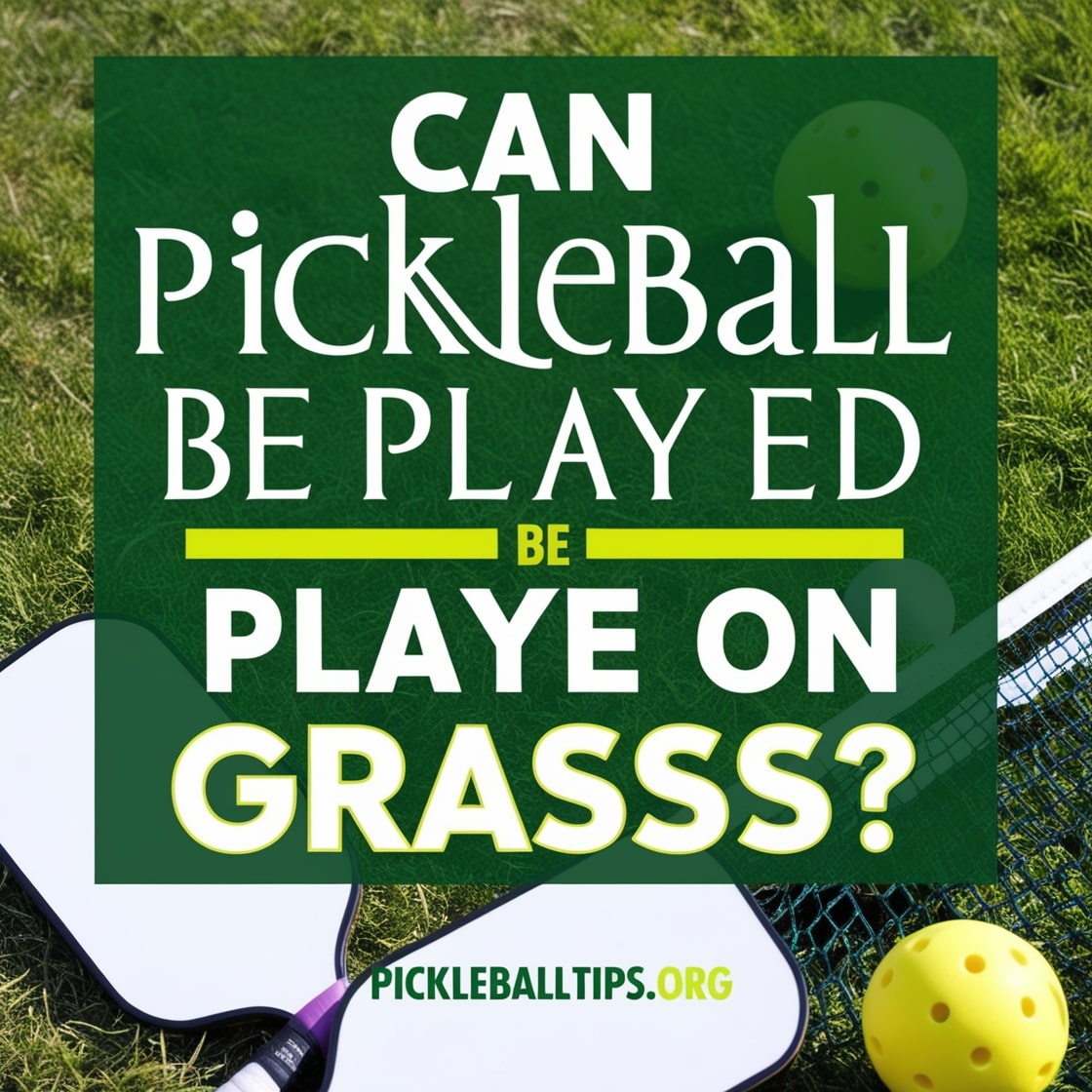Pickleball has surged in popularity as a recreational and competitive sport, bringing together aspects of tennis, badminton, and ping-pong. While most people associate pickleball with hard courts, there is growing curiosity about alternative playing surfaces, particularly grass. The question arises: can pickleball be played on grass? The short answer is yes, but there are factors to consider to ensure a fun and functional game. Let’s delve deeper into the nuances of playing pickleball on grass.
Why Consider Grass as a Pickleball Surface?

>>> SEE MORE: Is Pickleball the Fastest Growing Sport?
Grass surfaces offer several benefits, especially for casual or recreational games:
- Accessibility: Many homes, parks, and open spaces have grassy areas that can serve as temporary pickleball courts. This accessibility eliminates the need for specialized courts and makes it easier to introduce the game to new players.
- Comfort: Grass is softer compared to concrete or asphalt, reducing impact on the knees and joints. This makes it an appealing option for older players or those with joint concerns.
- Outdoor Enjoyment: Playing on grass allows players to enjoy the natural environment, adding a refreshing element to the game.
Challenges of Playing Pickleball on Grass
Despite its advantages, grass surfaces pose several challenges:
1. Uneven Surface
Unlike dedicated pickleball courts, grass is inherently uneven. Uneven ground can cause unpredictable ball bounces, which may disrupt the flow of the game. Maintaining a consistent rally becomes difficult when the ball reacts unpredictably to the surface.
2. Ball Behavior
Pickleballs are designed for hard, flat surfaces. On grass, the ball tends to lose momentum quickly, reducing the speed and accuracy of gameplay. This can make it challenging for players accustomed to the fast pace of traditional pickleball.
3. Footing and Mobility
Grass surfaces can be slippery, particularly if the grass is wet or recently mowed. Players may find it harder to move quickly or change direction, increasing the risk of slips and falls.
4. Net Stability
Setting up a net on grass requires additional equipment or adjustments. Standard pickleball nets are designed for hard surfaces and may lack stability on soft ground.
How to Play Pickleball on Grass
If you’re determined to try pickleball on grass, here’s how to make the experience enjoyable and safe:
1. Prepare the Surface
- Mow the Lawn: Ensure the grass is short and even. Longer grass can slow down the ball and hinder movement.
- Check for Obstacles: Remove rocks, twigs, or uneven patches to minimize tripping hazards and ensure a smoother surface.
2. Use Appropriate Equipment
- Modified Balls: Consider using foam or slower pickleballs. These balls are less affected by the uneven surface and provide a more consistent bounce.
- Portable Nets: Invest in a net system designed for outdoor use. Anchor the net securely using stakes or weights.
3. Adjust Gameplay Rules
- Shorten the Court: A smaller playing area reduces the impact of uneven ground.
- Simplify Scoring: Focus on rallies and skill-building rather than strict competition. This approach is particularly useful for beginners or younger players.
4. Prioritize Safety
- Wear Proper Footwear: Opt for shoes with good traction to prevent slips.
- Monitor Weather Conditions: Avoid playing on wet or muddy grass, as this significantly increases the risk of injury.
Advantages of Grass Pickleball for Beginners
Playing pickleball on grass can be a great introduction for new players. The slower pace allows beginners to focus on mastering strokes and positioning without the high-speed intensity of traditional courts. Grass also fosters a relaxed, family-friendly atmosphere, making it ideal for picnics, gatherings, or casual weekend games.
Professional Gameplay on Grass: Is It Feasible?
While grass pickleball is suitable for casual play, it is unlikely to become a standard for competitive matches. The challenges of uneven surfaces and unpredictable ball behavior make it difficult to maintain fairness and consistency. Professional tournaments require regulated environments, which grass cannot provide.
That said, the concept of grass pickleball could inspire new variations of the sport, much like beach volleyball evolved from traditional volleyball. Such adaptations could pave the way for exciting new formats and experiences.
Creative Alternatives to Traditional Pickleball Surfaces
If you’re exploring unconventional surfaces, consider these options:
- Artificial Turf: Combines the softness of grass with a more predictable surface.
- Sand: Adds an extra challenge, similar to beach volleyball.
- Driveways or Patios: Convenient for quick setups, provided the surface is flat and safe.
Each alternative offers unique challenges and opportunities for players to adapt and grow their skills.
Final Thoughts
So, can pickleball be played on grass? Absolutely! While it may not replicate the precision of a hard court, grass pickleball offers a fun and accessible alternative for casual games. With some adjustments to equipment and rules, you can enjoy the sport in a more relaxed setting. Grass pickleball is a testament to the sport’s adaptability and inclusivity, making it a delightful option for family gatherings, outdoor events, and introductory lessons.
Thank you for visiting pickleballtips.org and exploring the possibilities of grass pickleball with us. Your interest and enthusiasm for the sport fuel its growth and evolution. Happy playing!
